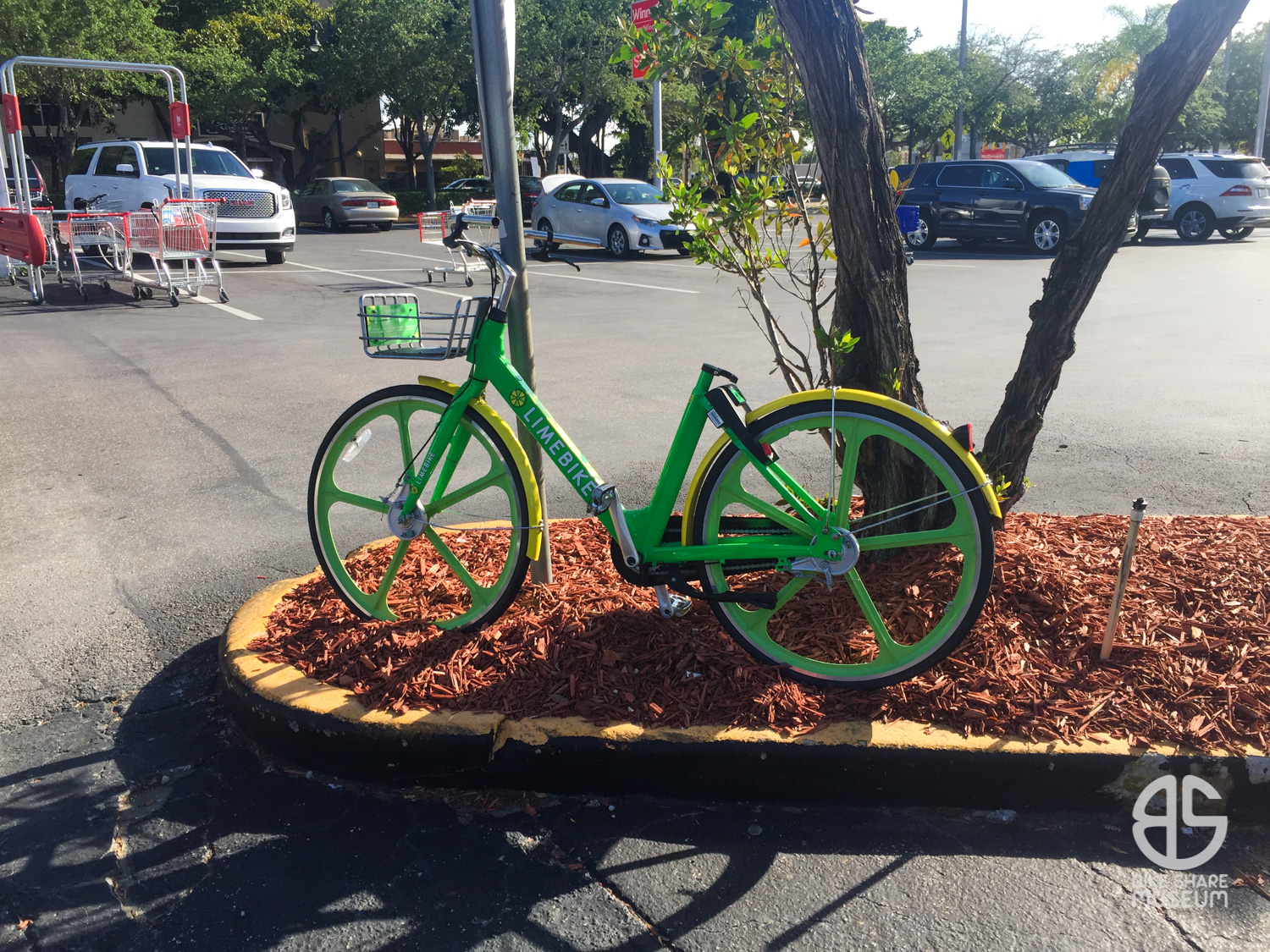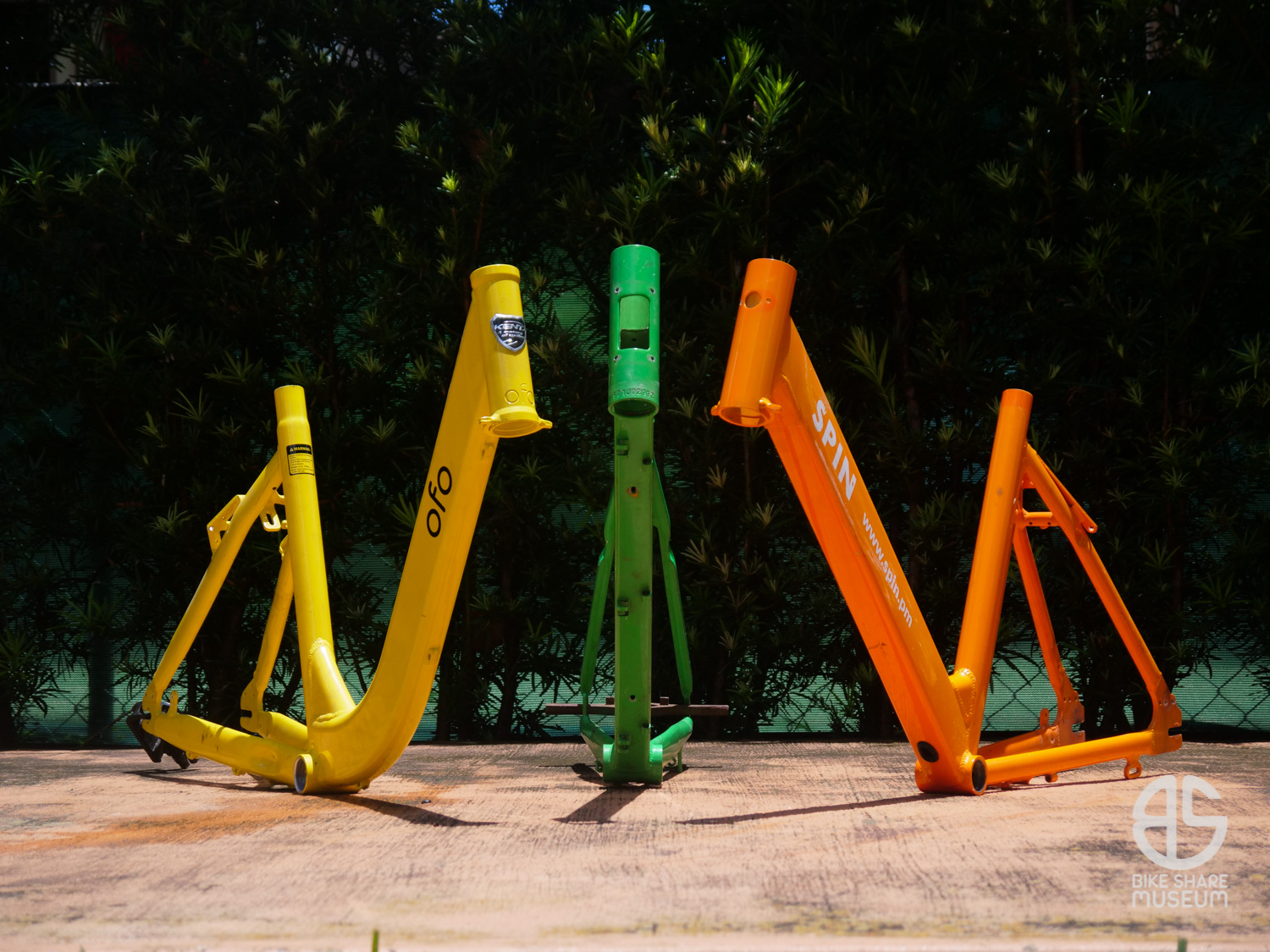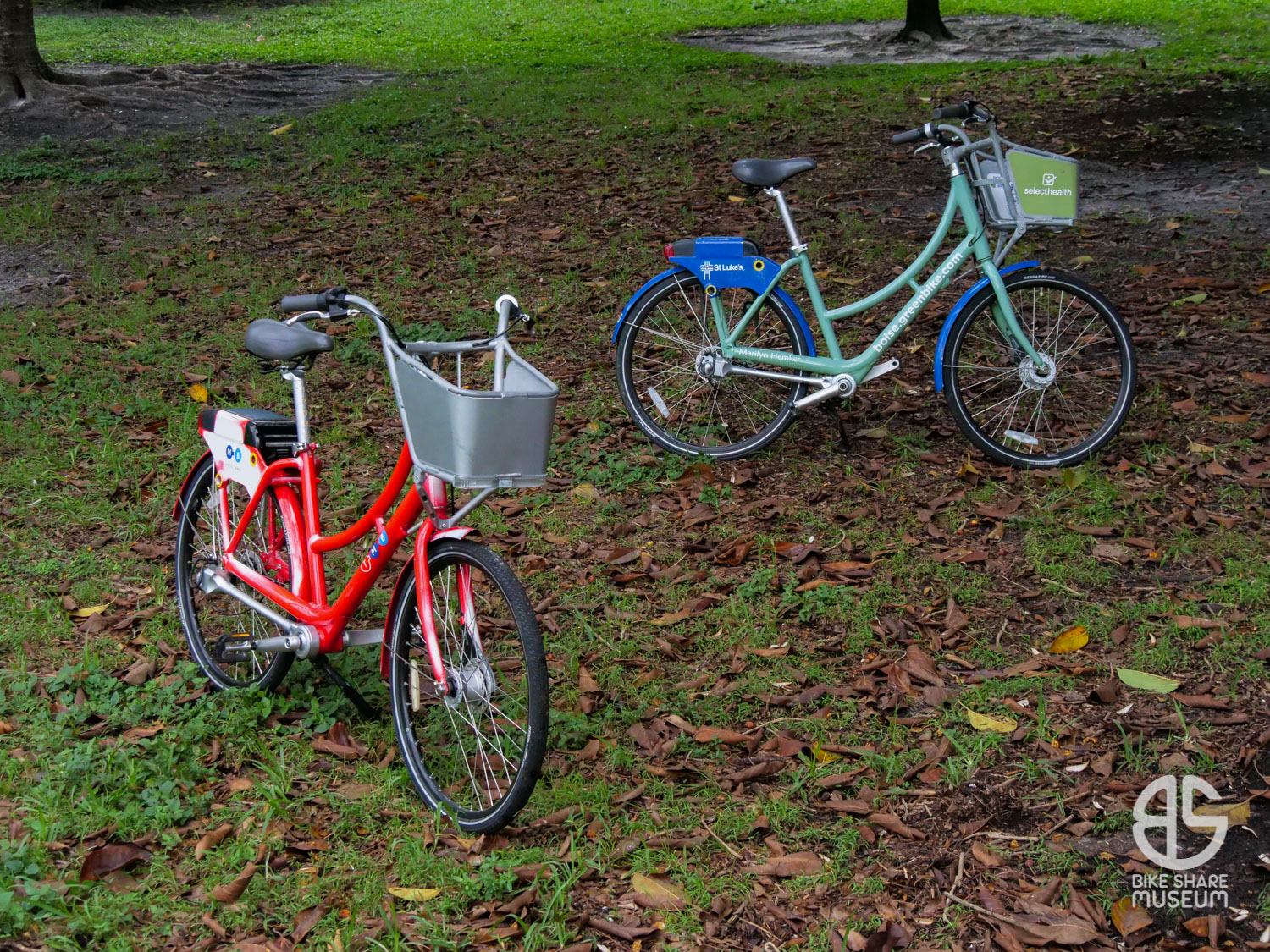A Lime in need of love
The first-generation LimeBike is an interesting study and this one tugged at the heartstrings. It was obviously vandalized, missing is seatpost, grips, and saddle – a sorry thing to happen to any bicycle – but since so it remained intact, it felt like it was begging to be put back together to be useful once more.
This happened to be the first LimeBike I’d seen in ages when I spotted it on April 17th, and it was even more unusual as a first-generation Lime. These were a bit difficult to spot even during the unregulated era in Miami, where the newer models could outnumber these by roughly 5 to 1 when distributed along Miller Drive.
These early Limes use impressively funky 5-spoke aluminum wheels which look like they were designed straight off an 1980’s BMX bike. They don’t quite match the frame (the launch demo Limes used a lighter green which was a much closer match), and some may question the looks over traditional stainless spokes, but they’re distinctive. Given the sliced Lime theme, they fit right in.
Once you look past the wheels, it’s tempting to say that the later Lime is just an update using the same frame, but they’re massively different. Despite the similarity, the original Lime rides on 700C (or 26 x 1-3/8″? Never had a chance to check) wheels, and the second generation rides on the more common 26″/ISO 559 wheels of other dockless bikes. The geometry of the second generation is ever so slightly stretched to compensate, while the original LimeBike – like this one – is not far removed from an old Raleigh 3-speed.

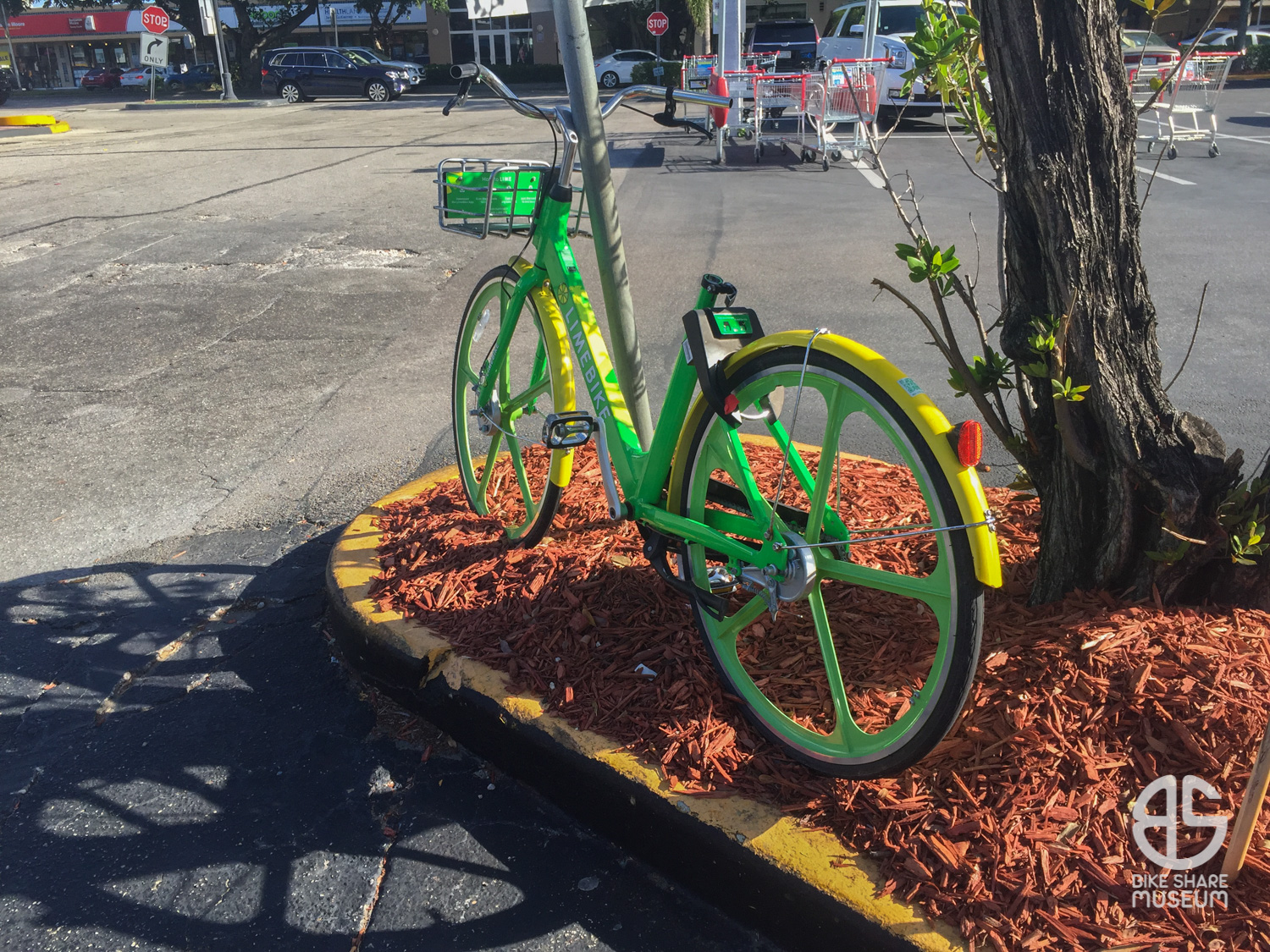
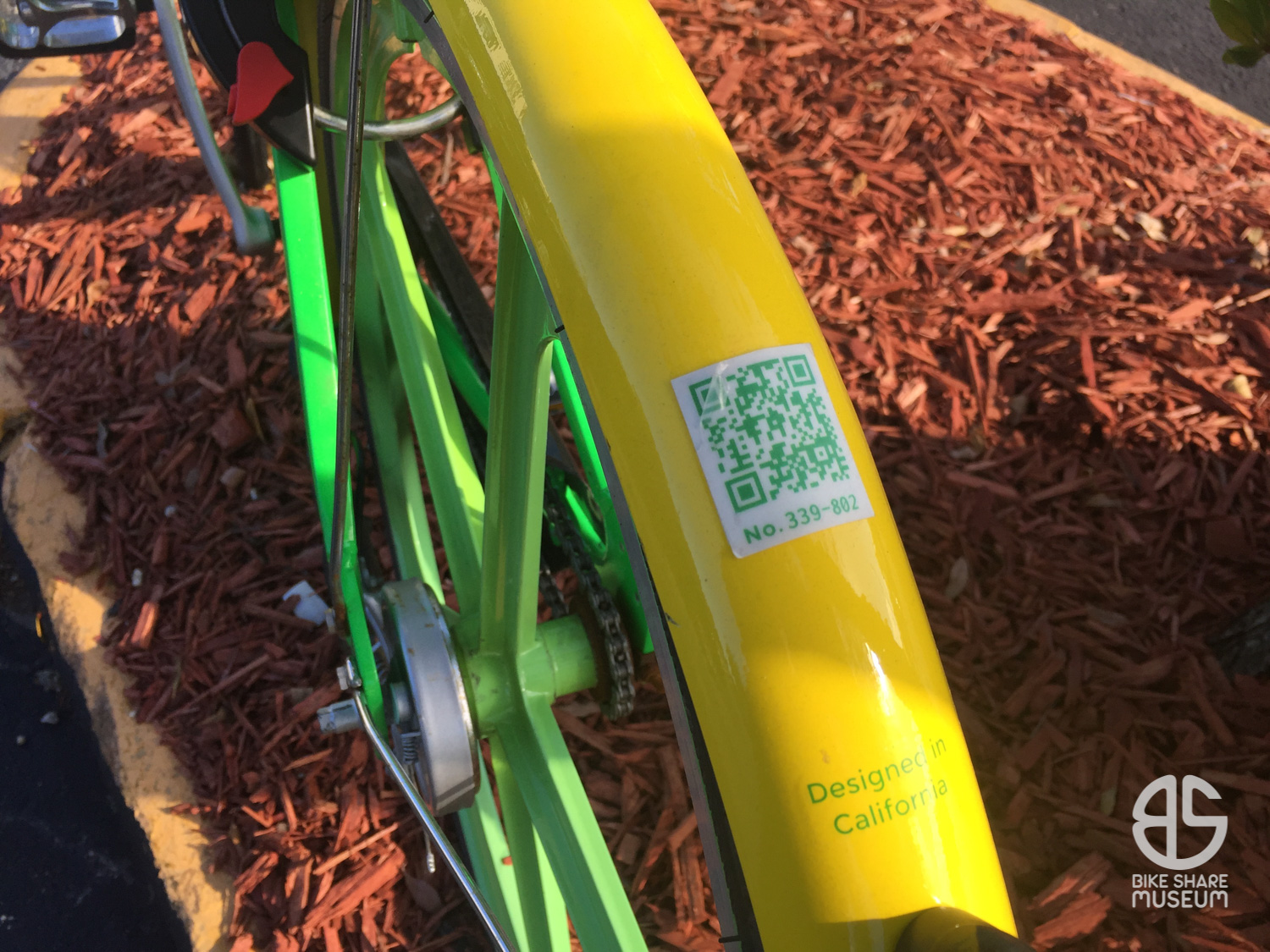
These first-gens also have a slightly shallower basket, and they do not have the front fork centering spring so wisely adapted from Dutch and Danish city bicycles. The handlebar stem is also a normal quill stem instead of the BMXish stem on the second-gen, which so neatly integrates the Q/R code. It also shares a similar kickstand as the Kent-built ofo bicycles, though the Lime has it located in the conventional position, forward of the chainstays. The ofos have them at the back of the stay to avoid conflicting with the left crankarm. Another detail similar to the ofo is that this Lime does not run a solar panel on the basket to charge the lock. Presumably, the lock runs a standard, non-rechargeable NiMH battery until out of juice. My guess is this one had reached that point.
When I spotted this one – 339.802 – it was well out of the then-established City of Miami service area, and was also quite a distance from where Limes were normally distributed during the deregulated era. I reported it in via the app, though Lime’s local support team didn’t initially respond. After re-opening the case via Zendesk, Lime did say they’d look into it – but a week went by to no avail. Eventually, 339.802 – in its unrideable state – was removed from the lot and put on the adjacent sidewalk. I doubt if this was by Lime.
For better or worse, this story ends with the eventual disappearance of the LimeBike. Where did it go? I have no idea. Maybe Miami Parking Authority might have seized it, but I doubt it. I can only hope that it was reassembled from parts and put back into service, but I fear that it may have been nicked for scrap metal. Who knows?
All I know is that I did drive the poor folks at Lime nuts about it; I wanted to see if they’d donate it to the Museum’s launch collection, so it’d have a chance at preservation. Selfish? Probably – but it’d certainly be more worthwhile than the eventual trip to the scrapheap.


